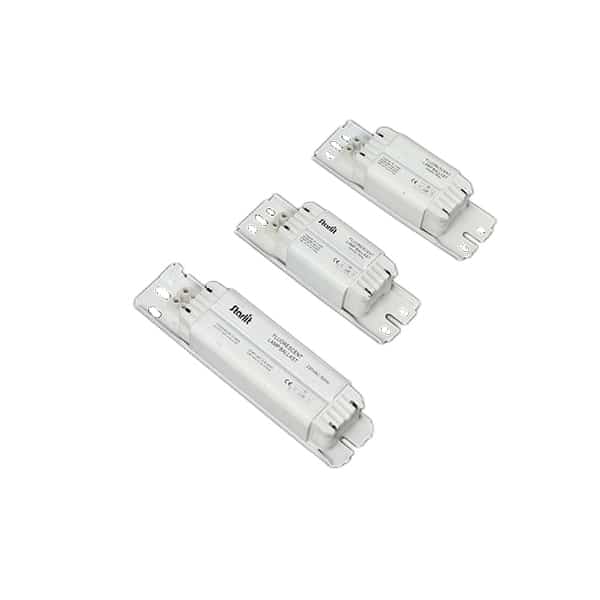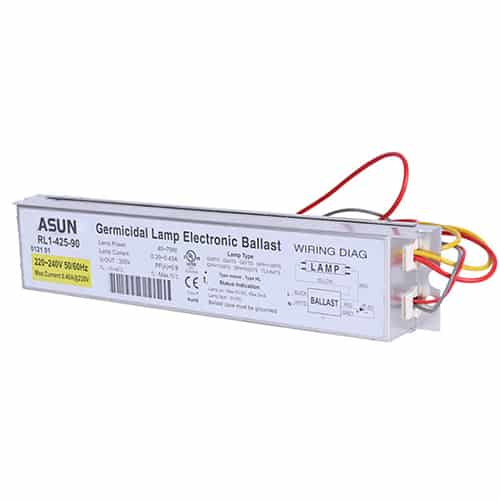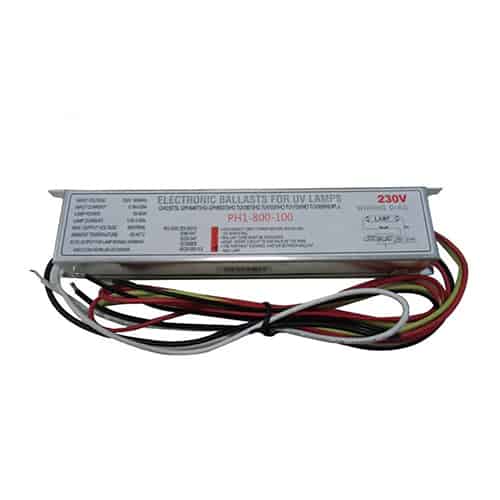Not understanding how lamp ballast resistors work can lead to poor performance, inefficiencies, or damage to your LED components. Knowing how to use ballast resistors correctly will help protect your LEDs and keep them working well. You need to understand how a ballast resistor works and why you need it in some LED lighting configurations.
A ballast resistor limits the current that flows through the LED lights, which keeps them from being overloaded. This allows the LED to operate safely and efficiently with the correct amount of current flowing through it, protecting it from damage due to too much current.
What is a Ballast Resistor?
A light ballast resistor is a current-limiting device used in electrical circuits to regulate the flow of current. In the context of LED lighting, its primary function is to reduce excessive current that could otherwise harm sensitive components like LEDs. LEDs are low-voltage devices that can easily be damaged if exposed to high levels of current, which makes the use of a ballast resistor necessary in many situations.
Ballast resistors are used in various applications where electrical current needs to be controlled, especially in devices that are sensitive to power fluctuations. By introducing resistance into the circuit, the ballast resistor ensures that only the required amount of current passes through the LED, keeping it within safe operating limits.
Why is a Ballast Resistor Necessary in LED Lights?
LEDs, unlike incandescent bulbs, do not operate well under fluctuating or high current. Since they are low-voltage devices, even a slight increase in current can lead to overheating, decreased efficiency, and a shortened lifespan. This is where the ballast resistor comes in—it helps control the current by introducing resistance, thereby preventing an overload.
In many cases, when replacing traditional bulbs with LED lights, especially in automotive applications or retrofit projects, the power supply may provide more current than the LED can handle. Without a ballast resistor, the LED could draw too much current, leading to overheating or failure. The resistor acts as a safeguard, ensuring that the LED operates at its optimal current level, thus preventing damage.
How a Ballast Resistor Works in an LED Circuit
A ballast resistor works by introducing resistance into the circuit, which limits the amount of current flowing through the LED. According to Ohm’s Law (V = IR), where V is voltage, I is current, and R is resistance, increasing resistance in the circuit lowers the current for a given voltage. In the case of an LED light, the ballast resistor effectively reduces the current to a safe level that the LED can handle without risk of damage.
When the power is supplied to the circuit, the ballast resistor creates a voltage drop across itself, meaning the total voltage is divided between the resistor and the LED. This ensures that the LED only receives the appropriate amount of current. As the resistor compensates for fluctuations in the power supply, it prevents current spikes that could potentially damage the LED or reduce its lifespan.
In practical terms, this means that the ballast resistor stabilizes the electrical conditions for the LED, ensuring it performs consistently and efficiently, even when external conditions, such as variations in voltage from the power source, change.
Benefits of Using a Ballast Resistor in LED Lights
One of the primary benefits of using a ballast resistor in LED lights is extended lifespan. LEDs are sensitive to current, and even small variations can shorten their operational life. By limiting the current, ballast resistors protect the LED from damage, ensuring that it lasts longer.
Another key advantage is consistent performance. With a ballast resistor in place, the LED light operates at a stable level, preventing flickering, dimming, or other performance issues that could arise from power fluctuations. Additionally, the resistor ensures protection from current spikes, safeguarding the LED against sudden surges that could otherwise cause failure.
Lastly, ballast resistors contribute to energy efficiency. By maintaining the correct current levels, the LED runs optimally, using only the amount of power it requires, thus reducing wasted energy and enhancing overall efficiency.
Potential Issues and Limitations of Using Ballast Resistors
While ballast resistors offer several benefits, they are not without limitations. One of the main issues is heat generation. As the resistor absorbs excess current, it dissipates energy in the form of heat. In some cases, especially in high-power LED setups, this heat can become significant and reduce the overall energy efficiency of the system. Managing heat dissipation is essential to ensure the longevity of both the ballast resistor and the LED.
Another limitation is that resistors may not be the best solution for all LED applications. For instance, in large-scale LED installations or where high precision is required, more advanced current-regulation methods may be preferable. In such cases, the resistor may not provide the level of efficiency or control needed for complex lighting setups.
Alternatives to Ballast Resistors in LED Lighting
In certain situations, constant current LED drivers or integrated circuit solutions may offer better alternatives to ballast resistors. Constant current drivers, for example, are specifically designed to regulate current flow, ensuring that the LED receives a consistent current regardless of fluctuations in voltage. This makes them ideal for more sophisticated or larger LED lighting systems where precision is critical.
While ballast resistors are a simple and cost-effective solution for many smaller or less complex LED circuits, LED drivers and other advanced current regulation systems can offer more efficiency, better performance, and greater protection for more demanding applications. It’s essential to evaluate the specific needs of the LED system to determine whether a ballast resistor or an alternative solution is the better choice.
Final Words:
A light ballast resistor is a critical tool in controlling the current flow through LED lights and making sure the LED operates safely and effectively. By limiting the current flow through the LED, it helps extend the LED’s life, protect it from spikes, and maintain consistent operation. However, ballast resistors do have their limitations, such as generating heat.
In more complex LED systems, you might want to use alternative current regulation methods like LED drivers. Understanding how ballast resistors work will help you make informed decisions about when to use them in your LED lighting arrangements.




